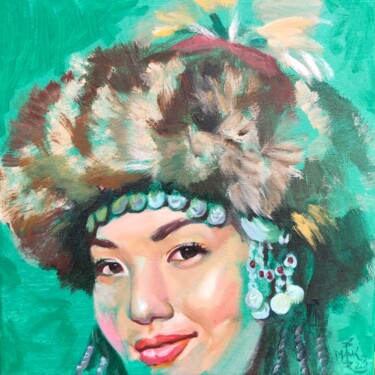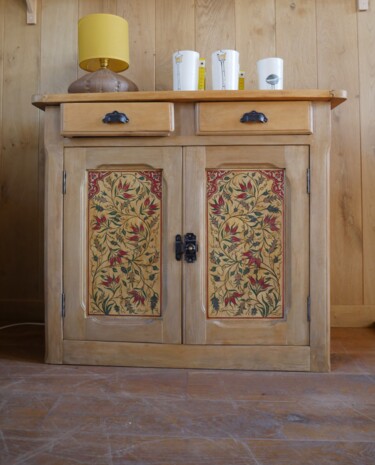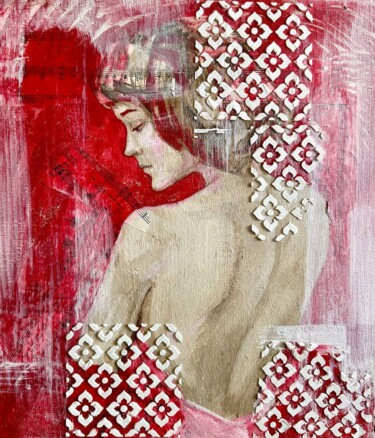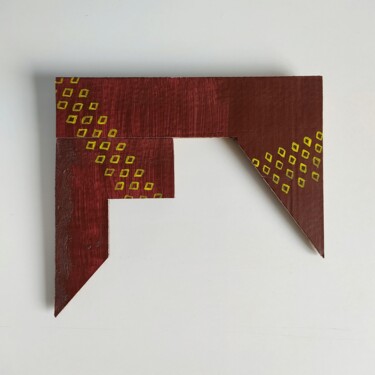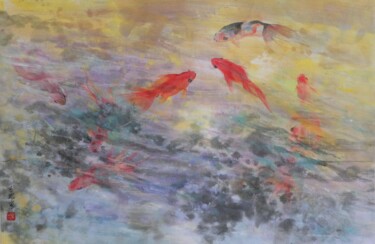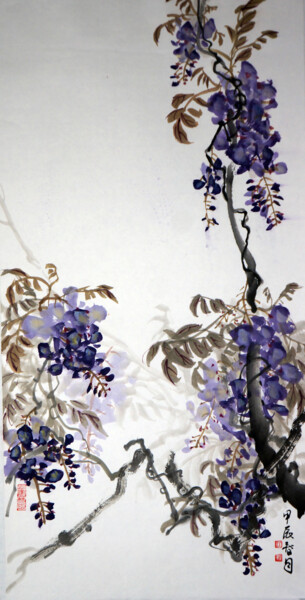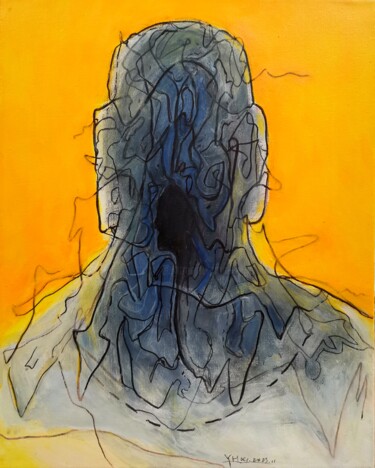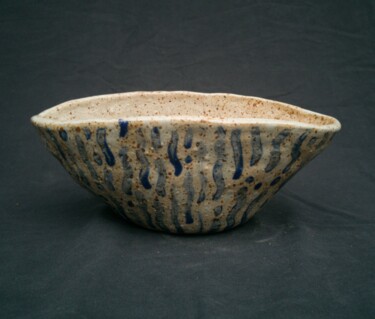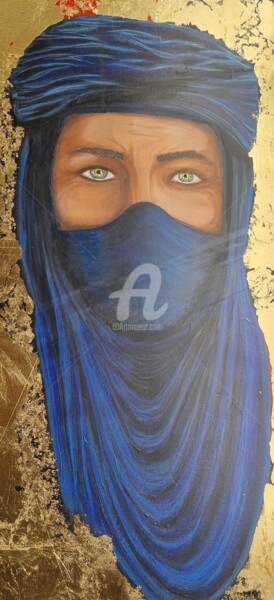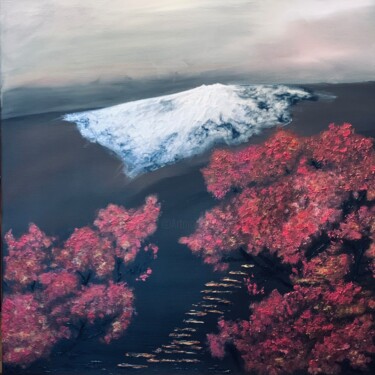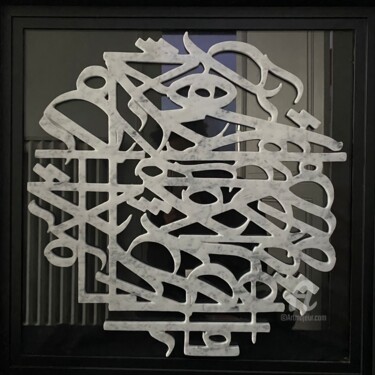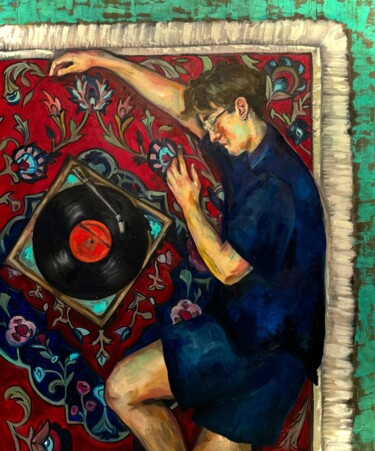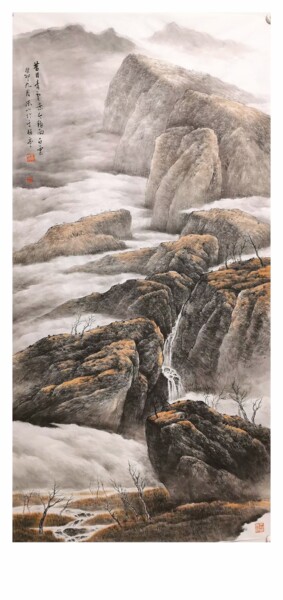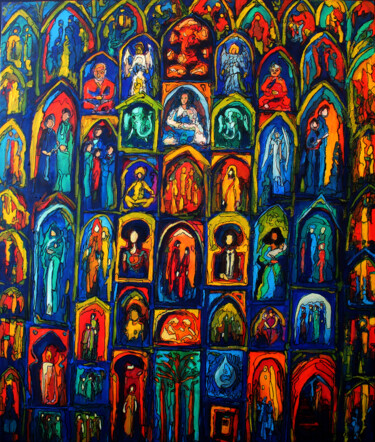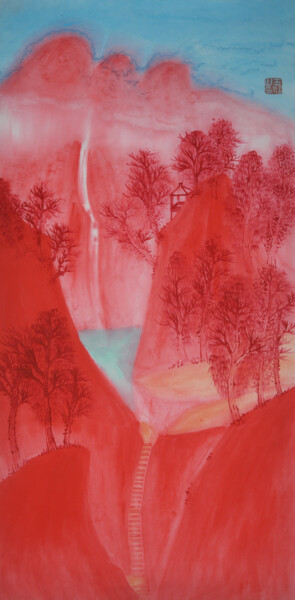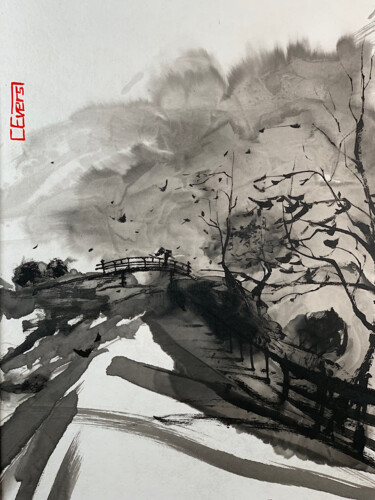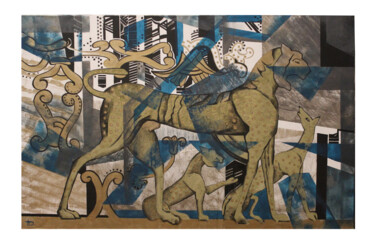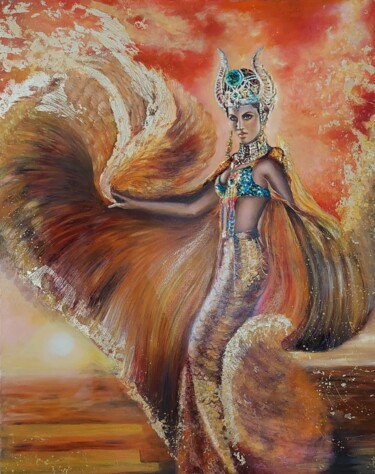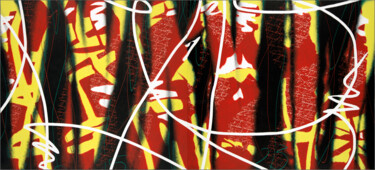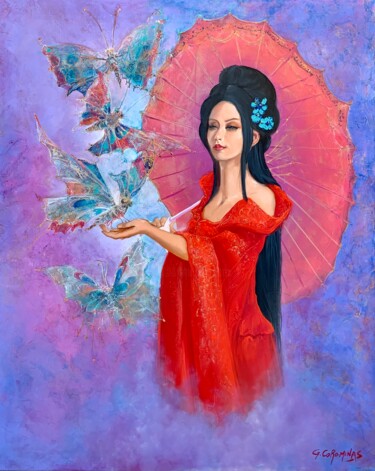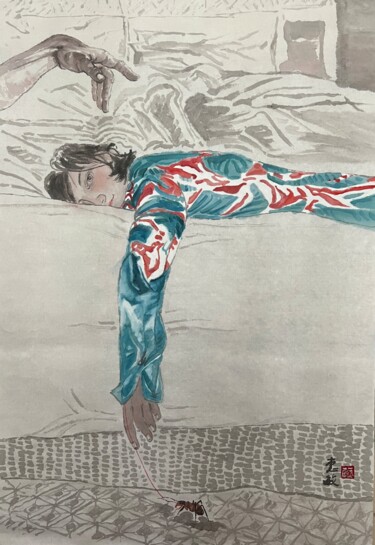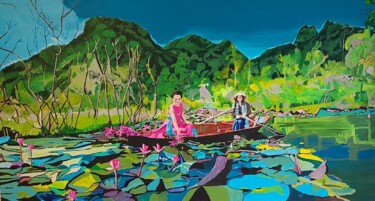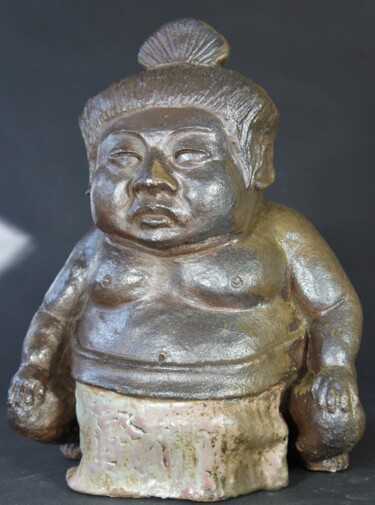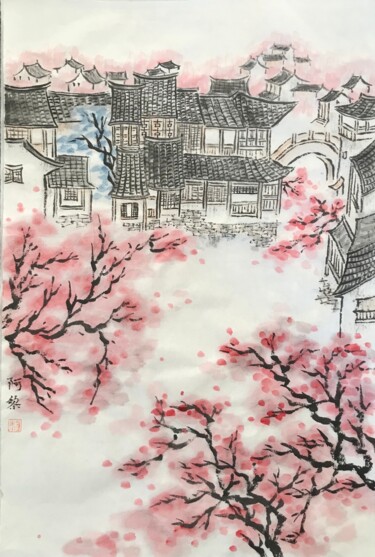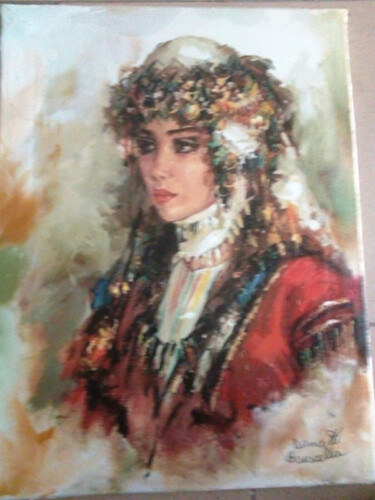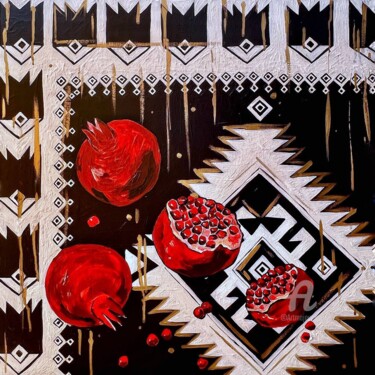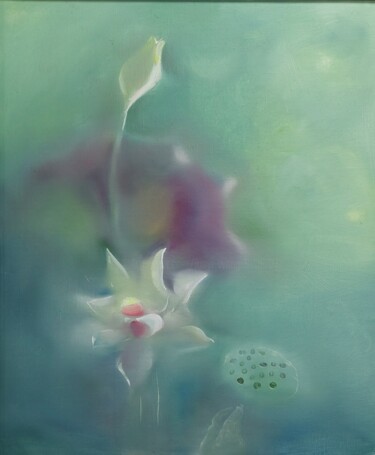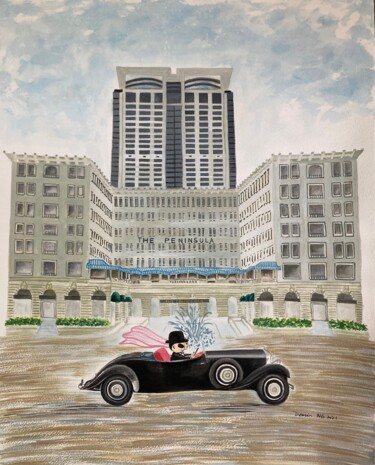1,228 Original artworks, Limited Editions & Prints:
Oriental art: a vast range of creativity from various cultures
There is a wide variety of artistic traditions from all around Asia that make up the history of Asian art. Central Asia, East Asia, South Asia, Southeast Asia, and West Asia are the most prominent parts of the Asian continent.
Eastern Asian art comprises the cultures of China, Japan, and Korea, whereas Central Asian art is dominated by creations from the Turkic peoples of the Eurasian Steppe. Southeast Asian art consists of the arts of Thailand, Laos, Vietnam, Singapore, Indonesia, and the Philippines, while South Asian art refers to the arts of the Indian subcontinent. Art from the Near East, or West Asia, includes Mesopotamian art from antiquity and Islamic art from the modern era.
The evolution of Asian art is similar to that of Western art in many respects. Cultures mingled through means such as the Silk Road transfer of art, cultural interchange during the Age of Discovery and colonization, and through the internet and current globalization. If we exclude the art of the Stone Age, the art of Mesopotamia is the earliest art in Asia.
Central Asian art
Contemporary Kyrgyzstan, Kazakhstan, Uzbekistan, Turkmenistan, Azerbaijan, Tajikistan, Afghanistan, Pakistan, and some regions of modern-day Mongolia, China, and Russia are all considered to be part of the Central Asian region, which is home to a rich history and a wide variety of artistic traditions. Central Asian art from antiquity to the middle ages illustrates the region's diverse population and cultural heritage. The cultural heritage of Central Asia reflects the region's multicultural makeup in surprising ways, as evidenced by the region's artistic artifacts. Scythian art, Greco-Buddhist art, Serindian art, and even modern Persianate culture are all part of this convoluted history, which also includes the transmission of art over the Silk Road.
Migrating herders who practiced mixed economies on the periphery of sedentary communities have called the grasslands of Central Asia (from the Caspian Sea to central China and from southern Russia to northern India) home since the late 2nd millennium BC until relatively recently. These pastoral nomads' prehistoric 'animal style' art reveals not only their zoomorphic myths and shamanic rituals, but also their openness to incorporate the symbols of settled culture into their own practices.
Cultures from all over the world have met and merged in Central Asia, making it the nerve center of the ancient Silk Road that connected China to the Mediterranean. Growing communities in the third and second millennia B.C. were a part of a vast trading network that connected Central Asia with the Indus Valley, Mesopotamia, and Egypt.
Islamic art has had a major influence on Western art in recent centuries, but older cultures drew inspiration from a wide range of sources, including the arts of China, Persia, and Greece, as well as the Animal style, which emerged among the nomads of the steppes.
East Asian art
Cultural practices from East Asia include the visual arts, literature, and the performing arts of China, Korea, and Japan. Given that they have no practical purpose and involve no manual labor, only painting and calligraphy are given the status of "real fine arts" in China. Sculpture, along with bronze casting and carving, as well as the production of ceramics, textiles, metallurgy, and lacquerware, are all regarded to be crafts. Traditional Chinese buildings are almost often made of timber and have a platform, post-and-lintel frame, roof-supporting brackets, and a heavy, sloping roof.
Three factors, including Buddhist iconography, indigenous Japanese themes and traditions, and Chinese visual arts, have had significant impacts on Japanese visual culture. The Hry Temple, built in the seventh century, was the first structure to use the asymmetrical layouts that would come to characterize Japanese architecture. The polychrome woodcut, which developed into the iconic ukiyo-e print, and the screen and panel paintings of the 16th to 18th centuries are prime examples of Japanese painters' preoccupation with abstraction from nature. The use of stone in building and sculpture and the development of an exquisite celadon glaze are two of Korea's most distinctive contributions to the arts.
Among the world's literatures, China's has the longest unbroken history (more than 3,000 years). Its history is intricately intertwined with that of the written language it shares with Korea and Japan. Ballads, legends, mask dramas, puppet-show texts, and p'ansori ("story singing") texts are all part of Korea's rich oral history, and the country also has a robust written tradition of poetry (notably hyangga and sijo forms). Since neither Japan nor Korea had their own written language, both countries' literary traditions borrowed heavily from China (though Japanese syllabary systems emerged about 1000, and Korean Hangul was developed in the 15th century). Poetry from Japan, especially in the haiku form, is renowned the world over for its delicate sensitivity, and it dates all the way back to the 7th century along with the country's many literary treasures like The Tale of Genji.
East Asian music, like Western music, created a pentatonic scale based on a 12-tone vocabulary, but its foundation is distinct. East Asian ensembles tend to be relatively small, and composers in the region typically prioritize melody and rhythm above harmonic complexity. It is worth noting that in East Asian countries, music, dance, and drama are often linked, and there is no evidence of distinct evolution of form in the associated categories of East Asian dance and theatre. Danced processionals, dance opera (jingxi, or "Peking," and other kinds of Chinese opera), shadow theatre, puppet theatre, and dialogue plays with music and dance are only few of the many varieties of East Asian performing arts (e.g., Japanese kabuki). The works of Bash, Bo Juyi, Du Fu, Hiroshige Ando, Lu Xun, and Murasaki Shikibu are also worth investigating, as are ikebana, Jgan-style paper folding, scroll painting, shinden-zukuri, shoin-zukuri, sukiya-style, Tempyu-style, and Tori-style architecture.
South Asian art
Arts of India, Pakistan, Bangladesh, and Sri Lanka, are often known as South Asia. A plethora of ancient textual literature in Sanskrit, Prkrit, and regional languages has helped bring people of the Indian subcontinent together, as has a shared cultural and ethical perspective. Despite the region's division into a kaleidoscope of political patterns over the centuries, the subcontinent as a whole has common musical and dance traditions, ritual rituals, religious practices, and literary ideas.
The epics of South Asia, such as the Rmyaa and the Mahbhrata, provide insight into the complex web of relationships between the region's many peoples. There is clear evidence of a familial relationship between the gods and heroes of widely separated locations, and many of the place names themselves allude to shared antecedents. There have also been persistent efforts to establish a unified political order on the area. In the third century BC, for example, Emperor Aoka controlled most of this area; in the eleventh century AD, Rajendra I of Chai captured much of India and Southeast Asia; and in the sixteenth century AD, the great Mughal Akbar did the same. Borders have grown and shrunk throughout South Asian history, joining and separating officially as complete regions, but the culture has stayed consistent throughout.
There was a widespread appreciation for the beauty of the region's mountains and rivers because of its shared physical setting. The Himalayas, which run along the northern border, are the world's highest mountains and represent a cultural ideal of grandeur, purity, and pristine snow. Rivers like the Brahmaputra and the Indus are honored as "mothers" in their respective regions because of the abundance of water they provide.
There is a widespread belief that water sprites and sylvan fairies, respectively known as ngas and yakas, inhabit the region's lakes and springs. The name of an early dynasty in Kashmir, Karkoa, is itself symbolic of nga worship. Ancient religious artifacts such as statues of ngas and yakas that have been unearthed at various locations hint at a shared devotional ethos, as do religious texts that have been orally transmitted for ages without losing its pristine intonation. Sculptures depicting a similar classical dance can be found in the Pakistani cities of Gandhra, Bhrhut, and Amarvat.
In South Asia, it is essential to be well-versed in a number of different arts before being able to specialize in only one. Since sculpture, like painting and dancing, depicts the entire world, it stands to reason that one cannot become proficient in each art form without first mastering the other. Dancing is a form of expression through movement and rhythm; therefore, an understanding of musical rhythm is crucial. Knowledge of literature and rhetoric is seen to be important for the stirring of emotion in music and dance; the flavor (rasa) to be expressed in music, dance, sculpture, or painting requires some familiarity with the written word. The arts are thus interconnected at many levels.
The arts in South Asia were not only practiced for their own sake as a respectable leisure, but also as an act of devotion and worship to a higher power. There are literary references to princes inspecting artwork for flaws. The achievements and ambitions, in both theory and practice, of the artist are exemplified by a single inscription that mentions the name of the stra-dhra ("architect") of the Mallikrjuna temple in Pattadakal, built in the eighth century.
South Asian cultures have long accorded artists a privileged status. The court was filled with poets, musicians, and dancers. A brilliant dancer received praise from Rjendra Ca, and the architect of the temple in Tiruvoiyr, who was also supported by Rjendra, was praised for his extensive understanding of architecture and art in an inscription. Yet, there was a strong connection between the folk arts and the high arts. Similarities existed, for instance, between tribal group dances and Western classical art, dance, and music. The Indian subcontinent has a rich artistic history, with sculpture in the round (citra) and sculpture in relief (ardhacitra) both holding significant positions.
Citrbhsa, which translates to "the appearance of sculpture," is the third highest art form. A verse from a drama by the 5th-century poet Klidsa explains how the eye tumbles over the heights and depths depicted in the modelling of a painting, demonstrating how essential the influence of chiaroscuro (i.e., use of light and shade to express modelling) was. The masters place the most importance on a painting's line sketch, which must be drawn firmly and gracefully, followed by shading and the depiction of modeling, which are valued by others, the decorative element, which appeals to feminine taste, and the splendor of color, which appeals to common taste. It's very impressive that you were able to indicate so much form with such little drawing. There are numerous literary examples of successful portraiture in South Asian painting and sculpture, demonstrating the centrality of portraiture to the region's visual arts. The Viudharmottara, written in the sixth century, divides portraiture into four categories: natural, lyrical, sophisticated, and mixed. It also categorizes different types of people based on their hair and eye shapes and colors. There includes a rundown of the many artistic perspectives, as well as an explanation of the basics of foreshortening. Like a poem mirrors the poet, it was thought that paintings and sculptures would take on the characteristics of their makers.
In spite of South Asia's long history of exposure to foreign influences, the region has always found ways to combine these elements into indigenous practices, producing a unique synthesis rather than a mere copy. This is also reflected in the artwork of Pakistan's Gandhra region, which at the time (4th century BC) was steeped in the Greco-Roman culture. The incorporation of Indian motifs and styles into the dominant Western style is a hallmark of this era's sculpture.
After the Kushan invasion in the first century AD, there was a clear influx of outside influence, but ultimately the indigenous culture triumphed. The Mughal Empire, which ruled South Asia beginning in the 16th century and consisted of Muslims from Central Asia, unified the region culturally by imposing a dominantly Indian education on its subjects. Muslim art flourished under the reign of the second Mughal emperor, Humayn, who brought in artists from the court of the Persian Shah and created a history of fusing Indian and Persian styles.
Each region's art reflects its own political structure, moral and ethical norms, and social structures. As early as the third century BC, rulers were showing a willingness to serve the people and treat them nearly like offspring. Magnificent coins from the Gupta Empire of North India in the 4th–6th centuries depict the ideal of the monarch as the unrivaled bowman, the unifier, the tall and stately noble spirit, the sacrificer for the wellbeing of the subjects, and the hero of his people (who envision him on a stately elephant). Artwork depicting just conquest and just warfare. War and conquest, symbolic horse sacrifices, the king's council, diplomatic receptions, peace negotiations, temple construction, appreciation of the fine arts (including dance and music), and the coronation of kings are just some of the many governmental activities depicted in the extensive series of sculptures depicting the history of the South Indian Pallava dynasty of the 4th-9th centuries.
Similar to how sculptures that emphasize dharma, the conventions or laws guiding obligation, reflect moral attitudes, so too do sculptures that depict moral acts. One common way in which the principle of ahimsa, or nonviolence toward others, is visualized is through the image of a deer, and the ideal of a sacred site is typically depicted as a location where the deer can roam freely. Artwork often depicts scenes where the subjects are reveling in their own sacrifices or those of others. Stories from the Paca-tantra, one of the world's earliest collections of fables, are depicted in sculptures in a straightforward but effective manner. South Asian art consistently depicts the piety, faith, and respect for morality that has permeated the subcontinent's social structure for generations.
Southeast Asian art
The arts of Southeast Asia include its written, oral, and visual forms. Although Indian culture had a significant impact on the area's development, there are some shared characteristics that predate this time. Art styles not derived from India, like as batik fabrics, gamelan orchestras, and the wayang puppet theater, remain popular. Indigenous wet-rice (or padi) cultivation, metallurgy, navigation, ancestor cults, and mountain worship were all common.
Southeast Asia encompasses the vast Indochina Peninsula as well as the other islands of the region often known as the East Indies. Southeast Asia can be broken down into two distinct parts: the mainland and the islands. Myanmar (Burma), Thailand, Laos, Cambodia, Vietnam, Malaysia, Singapore, Indonesia, and the Philippines are the governmental entities that make up this area. Although the Philippines were not initially considered part of Southeast Asia, it is now generally considered to be part of the region due to its proximity to China and Japan and the close cultural similarities it has with the cultures of Southeast Asia.
All of Southeast Asia shares a similar climate and topography, which has shaped the region's history and culture. Culturally, those who live in the mountains tend to diverge from those who live in the valleys.
It was originally believed that the people of Southeast Asia shared a lack of originality dating back to prehistoric times and that they were more "receptive" than "creative" in their interactions with other cultures. Later excavations and discoveries in Myanmar and Thailand prompted some scholars to argue against the accepted theory that civilization moved to Southeast Asia from China in prehistoric times. Instead, they argued, the people of mainland Southeast Asia were cultivating plants, making pottery, and working in bronze around the same time as the people of the ancient Middle East, and so civilization spread from mainland Southeast Asia to China a millennium earlier. Because they are always more interested in the practical job of creating beautiful things, Southeast Asians do not have a rich heritage of art theory, literary or dramatic criticism.
It is not possible to trace the creation and evolution of art forms in Southeast Asia step by step since the people, especially in the western half of the mainland, worked on nondurable materials. Given the area's history of dense forestation, it stands to reason that wood would have been the earliest material employed for aesthetic reasons. Despite their newfound proficiency with metal and stone, they never abandoned the traditional practice of wood carving, which continued to thrive even after the great age of stone sculpture and stone construction had passed (about the 13th century). In the western Shan state of Myanmar, along the Salween River, archaeologists uncovered prehistoric cave drawings that bare a striking resemblance to later Naga sculptures on house posts. Similar to how the sun symbol can be found as an art motif all over Southeast Asia, and how carvings under the eaves of Naga houses allude to awe, triumph, and joy at acquiring a human head, the later aesthetic tradition of Southeast Asia echoes the cave paintings of a pair of human hands with open palms holding the sun and a human skull. The cave painting is proof that the area's arts have always been intertwined with its magico-religious past.
It was formerly believed that the bronze drum casting technique employed at Dong Son, near Hanoi, had originated in China. However, new excavations in Thailand have shown that both the drums and the so-called Dong Son civilisation are indigenous to mainland Southeast Asia. Regardless, the bronze drums cast by the Karen for millennia until the early years of the 20th century show the continuity of the aesthetic legacy of Southeast Asia. Metalworking had to have developed early on, as the mountains of mainland Southeast Asia provided gold, silver, and other metals. The hill peoples of Southeast Asia have a long history of making and using exquisite silver buttons, belts, and jewelry. Textile patterns follow the same aesthetic lineage. Songs, dances, and other forms of musical expression were traditionally used in tribal ceremonies.
Under the support of the rulers throughout Southeast Asia, the arts thrived. Around the time of Christ's birth, tribal tribes began to formally organize into city-kingdoms or conglomerations of villages following years of settled living as rice producers. In this view, a king was little more than a supreme tribal chieftain. Since the tribes already had a tradition of worshiping spirits, the monarchs looked for a new deity that would become the object of devotion for everyone. This yearning for new national gods contributed to Southeast Asia's openness to the gods of Hinduism and Buddhism. Kings in Southeast Asia were responsible for spreading new religions, hence the region's temples saw a golden age from the first through the thirteenth centuries.
Temples became centers of cultural activity, and their walls became canvases for architecture, sculpture, and religious murals. Scholars of Sanskrit, the language of the sacred texts of Hinduism, were courtiers in the ancient empires of eastern Indochina and the islands, where they created a local Sanskrit literature. Only through the great Hindu epics Mahabharata and Ramayana did this literary endeavor ever make it to the common people. Stories about Hindu gods, devils, and powerful men were essential for explaining Hinduism to the general people when the Sanskrit scriptures were out of their reach. Across the peninsula in the Pyu-Burmese empire of Prome, which flourished before the 8th century, no such development occurred for two reasons: first, Hinduism was never widely accepted in Burma, and second, the more open Burmese society developed neither the institution of a god-king nor that of a hereditary nobility.
Later Pagan kings were surrounded by Pali experts, but the study of Pali was conducted not at the palace but at monasteries across the realm, bringing the teachings of the Buddha to even the most remote of villages. Buddhist monks and academics from all over the world traveled to Pagan to study Pali, while the courts of the kings in Cambodia and Java remained merely regional centers of Sanskrit research. Jataka (Buddha's birth) stories were used to explain Buddhism to the common people who could not read the Pali scriptures, just like Indian epics were used to explain Hinduism to the masses. Temples in Cambodia and Java were decorated with carvings and frescoes depicting scenes from the Jatakas, much like those depicting events from the great epics.
The arrival of Islam in island Southeast Asia after the Majapahit dynasty established a third cultural layer on top of the already existing indigenous and Hindu-Buddhist ones. A new Burmese empire developed from the ashes of the old and carried on the mission of spreading Buddhism over mainland Southeast Asia. The Burmese invasion of Siam in the 18th century brought with it Hindu culture, which helped to foster the development of Burmese play. Reconquered by China, Vietnam on the other side of the peninsula became increasingly influenced by Chinese culture. Following a brief Islamic cultural heyday, the indigenous people of Southeast Asia's island nations were forced to submit to foreign domination. Only in Burma and Siam, two of Southeast Asia's governments that emerged from years of fighting as powerful kingdoms, did native arts continue to flourish.
Religion and national history have long been central to Southeast Asian art. Aside from the life and character of the Buddha and the gods of Hinduism, religious doctrine was not a major point of interest. After the great empires fell, but their memory of glory and strength persisted, a new theme emerged in national history: the veneration of legendary heroes from the past.
While the Buddha image evolved over time, it continued to be a popular subject for artists. In addition to introducing local color by using, as background, scenes from the artist's own contemporary time, depicting scenes from his previous lives in fresco and relief sculpture served the purpose of teaching the people Buddhist ethics, as the Jatakas emphasized certain moral virtues of the Buddha in his previous lives.
The same was true with depictions of events from the Hindu epics, which offered the artist a similar chance and served a similar function. As time went on, Buddhist and Hindu scripture characters like gods and goddesses, heroes and princesses, hermits and magicians, demons and dragons, flying horses and winged maidens, and so on, merged with similar native figures, and folktale plots were incorporated into the overarching religious themes.
Different representations of the naga, a kind of superhuman spirit, emerged in different parts of the world when the naga was appropriated from Buddhist and Hindu scriptures and fused with national analogues. The naga of Burma has a distinctive crest on its head. For the Mon, naga was a crocodile, but for the Khmer and Indonesian, it was a nine-headed serpent.
Although the demons of Southeast Asia have been grouped together under the Pali-Sanskrit term yakkha or yaksha, their distinct identities have been preserved in the sculpture and painting of each country. Unfamiliar to the monsoon forest, the lion nonetheless became a popular native emblem and theme because of its association with the gods of Hindu and Buddhist mythology. Even after the Khmer Empire had abandoned the practice of worshipping the snake-dragon as a god of fertility, the nine-headed naga had become a symbol of protection and royal power, and stone nagas stood vigil over the royal palaces and sacred temples. Naga worship was frowned upon by Buddhists.
Throughout Burmese and Mon art history, the naga has always been depicted in a subservient role to the Buddha, often making a seat out of his coils for the Buddha or raising his massive hood to protect him from the elements. The guardian figure of a Mon temple was traditionally depicted as a lion with two bodies and a human head, while the guardian figure of a Burmese temple was traditionally depicted as a crested lion. Despite the Tai's claim to inheriting the Khmer and Mon naga art traditions, the good demon served as the temple guardian in those cultures.
The Indian animals became a part of the ancient symbolism and animal imagery that entered the arts. For example, the Mons chose the red sheldrake as their emblem, the Burmese recast the sun as their favorite bird, the peacock, on the grounds that in Buddhist mythology the peacock is associated with the sun, and in Indonesia the mythical bird called Garuda, the vehicle of Vishnu, became merged with the local eagle. The depictions of these birds have found use as ornamentation. Stylized versions of the animals that once decorated the thatched roofs and wooden walls of Southeast Asian homes made their way to the more opulent palaces and temples. Designs of trees, fruits, and flowers from the monsoon forests were combined with Indian floral patterns and ancient geometric motifs.
Southeast Asian art is completely distinct from the art of any other region, with the exception of India. Although Burma has historically been a vital trade link to China, Chinese influences are surprisingly absent from traditional Burmese art. The Tai arrived late in Southeast Asia, bringing with them some Chinese artistic traditions, but they quickly abandoned those practices in favor of those of the Khmer and Mon. Today, the only traces of those earlier contacts can be seen in the temples' architectural features, particularly the tapering roof, and lacquerware.
Since Vietnam was a colony of China for a millennium, Chinese culture influenced Vietnamese art. Archaeological evidence of Hinduism in modern-day southern Vietnam dates back to the time of the ancient Champa monarchy, which was captured by Vietnam in the 15th century. Chinese influences can be seen in the northern Vietnam Buddhist statues. Comparing the temple-tombs of Cambodia and Indonesia with those of Vietnam's emperors or the opulent and dignified Buddha images of Vietnam with those of Cambodia and Burma's ascetic and graceful Buddha images reveals the fundamental differences in aesthetic aim and style between the arts of East Asia and those of Southeast Asia. Islamic art, which rejects animal and human figures and seeks to reveal the reality behind the illusory beauty of the everyday world, likewise shares little with Southeast Asian art. Southeast Asian art ignored the teachings of Hinduism and Buddhism that the sensual world was illusory and impermanent.
In Southeast Asian art, reality and fantasy coexist, and a positive outlook on life permeates every piece. Some have noted that classical Khmer and Indonesian art focused on representing the gods' daily lives, yet to a Southeast Asian perspective, the gods' daily lives were the same as their own: joyful, earthy, and divine. Not only did Southeast Asian art not reflect the European conception of "art for art's sake," but neither did it reflect the European divide of art into secular and religious categories. The same motifs that graced a magnificent temple and a lacquer platter were tattooed on the thighs of a Burmese guy. The Southeast Asian artist did not need to use models since, unlike his European counterparts, he did not care about accuracy in every anatomical aspect. The use of fantastic elements and the stress on celebrating the good in human life are what set Southeast Asian art apart.
Focus on Japanese art
There is a wide variety of art forms and media that can be traced back to Japanese art," from ancient ceramics and sculptures to ink painting and calligraphy on silk and paper, ukiyo-e paintings and woodcut prints, ceramics and origami. contemporary manga and anime. From the first signs of human existence in Japan in the 10th millennium BC to the present day, Japan has a rich and varied history.
Japan has experienced both quick influxes of foreign ideas and lengthy isolation from the rest of the world. The Japanese have a long history of assimilating and adapting aspects of other cultures that they find aesthetically pleasing. In the seventh and eighth centuries, sophisticated art in Japan was created in response to the spread of Buddhism. As the Japanese moved away from China and developed their own unique styles of expression in the 9th century, the secular arts gained prominence; from then on until the late 15th century, both religious and secular arts thrived. When the Nin War broke out in Japan (1467–1477), it ushered in over a century of political, social, and economic upheaval. Artwork that survived the Tokugawa shogunate's purges was largely secular, and religion played a much smaller part in everyday life. The sudden introduction of Western styles was a significant event during the Meiji Period (1868-1912).
In Japan, both amateurs and experts engage in painting as their primary form of artistic expression. The Japanese are especially attuned to the values and aesthetics of painting because, until the modern era, they used a brush instead of a pen. During the Edo period, woodblock printing became a major art form, and the methods used to create its vibrant prints were refined to meet the need of a growing popular culture. As the religious significance of traditional Japanese Buddhism waned during this time, the Japanese found sculpture to be a less appealing medium for expressing their creative vision.
It is generally agreed that Japanese pottery is of the highest artistic quality and includes some of the earliest artifacts from Japan; porcelain export from Japan has been a significant economic activity at various times. Japanese lacquerware, exquisitely decorated with maki-e, has long been a popular export to Europe and China, and this trend continued throughout the nineteenth century. Traditional Japanese architecture prominently features natural materials and the integration of indoor and outdoor living.
Japanese prints
Ukiyo-e, or Japanese woodblock prints, are growing in popularity in the West. Their name comes from the phrase "pictures of the floating world," which describes their subject matter. The Buddhist belief that happiness is fleeting and that only an absence of desire may lead to enlightenment provided the inspiration for their soaring, weightless picture.
The shoguns of feudal Japan were instrumental in the development of Japanese printmaking, which began in the Edo region (modern-day Tokyo). Under the Sakoku policy, which literally means "secluded or closed country," Japan cut itself off to the rest of the world. Perry, an American general, visited Japan in 1853 to negotiate with the Meiji administration. Many prints of Ukiyo-e, a contemporary art form that was flourishing when Perry visited Edo, could be found for sale on the city's sidewalks.
Scenes from Japanese history and legend were frequently depicted in ukiyo-e, as were portraits of kabuki performers, scenes from the theater, couples in love, renowned courtesans, and landscapes. Travelers from the West took an instant liking to Ukiyo-e prints, so it's not surprising that they brought them back home with them, introducing the world to Japan's unique style of art.
Ukiyo-e art prints were made by pressing inked woodblocks onto paper after the images had been carved backwards into the blocks. When printing initially began, everything was done in black and white. Okomura Masanobu and Suzuki Harunobu were pioneers in the field of color woodblock printing, which required a separate block for each color.
A key-block for the contours and individual blocks for each hue were required. Moreover, since a small number of prints may be made from a single block, a significant number of blocks would need to be carved in order to print a substantial number of copies. The artist was only one of many professionals involved in the production of Japanese art prints. Others included designers, mold planners, mold cutters, and mold presses.
Around 1912, the printmaking movement known as Offshoots of Ukio-e began to die away, but two other printmaking schools soon formed to fill the void. Sosaku Hanga and Shin Hanga are the two names for them. There are two schools of thought when it comes to the printing process: Sosaku Hanga, which holds that the artist must play a central role in every step, and Shin Hanga, which is more traditional and holds that the publisher is most central, so different artists can be responsible for the design, blocking, and printing.
In order to buying and Selling Ukiyo-e prints it is important to know a few Japanese terminology in order to properly appreciate and appreciate this fascinating art form. When referring to a Japanese print, the term "atozuri" indicates that it was printed after the initial run had ended but still used the original woodblocks. Shozuri prints are first editions, while fukkoku prints are copies. Artist signatures and print edition numbers were not typically included in the final steps of the Japanese printmaking process until the second part of the twentieth century. Instead, each print had a stamp that named its creator as well as its publisher and sculptor.
However, as Europeans learned about Japan's unique culture, a fad for all things Japanese emerged, and massive shipments of Japanese art prints were sent to the continent in the late 1860s. Publishing houses in Japan quickly realized they would need to produce reproductions of the more famous woodblock prints to meet the burgeoning demand.
It is easy to tell which prints are authentic and which are duplicates because of stamps and other marginalia. The originality of a document can often be determined by its paper and color condition. Since the average art collector probably cannot read Japanese characters, they should seek the advice of an expert before buying an authentic Japanese art print.
Focus on Chinese floral art meanings
From the Neolithic period onward, artists in China have depicted plants in their artwork. Flowers, birds, and insects are utilized for adornment, and not just because they are beautiful; they also carry a wealth of meaning. During the Song dynasty (960-1279), a surge in the number of paintings titled "bird and flower" solidified the status of floral imagery as a prominent subject in Chinese art. Other than on scroll paintings, this theme may be seen on a wide variety of three-dimensional artworks, including porcelains, lacquerware, jade sculptures, textiles, furniture, and more.
As we prepare to welcome Spring, we will examine the symbolism of flowers in Chinese art by looking at a selection of paintings from the AGGV's Asian Art collection from the 19th century. This album's artwork are all spot-on representations of flowers and butterflies based on their actual flora and fauna. It's likely that the combination first appeared in the 18th century on goods that were specially commissioned to be given as birthday presents. Butterfly rebuses can be used to express multiple good wishes at once. These items, which are also connected with long life, are great birthday symbols. Butterflies, in Daoism, stood for the unfettering of the spirit. Flowers represent many positive things, and their inclusion in these artworks just adds to their positive connotations.
According to a Chinese folktale about two lovers who were tragically torn apart by war, the poppy represents fidelity and loyalty between partners in a romantic relationship. The story revolves around poppies, which grew at the spot where the wife had committed herself after the death of her soldier husband.
The expression huakaifugui suggests that camellias, which bloom during the Chinese New Year (late January to mid-February), should be utilized to beautify one's home in order to welcome good fortune in the coming year.Because of Europe's longstanding fondness for the rose, the flower is frequently portrayed on items intended for sale elsewhere. Since the Chinese rose blooms frequently throughout the year, the name "permanent spring flower" has come to be applied to it.
Pride of the Morning The trumpet-shaped blossoms of the morning glory, which bloom in a vibrant purple, were initially utilized as a decorative feature in Ming blue and white goods in the 15th century. It is claimed that this flower symbolizes happiness in marriage. China is home to many azalea species, all of which have their own unique blooming seasons. When used in conjunction with butterflies, the azalea takes on the connotation of 'creative talent in art,' representing the feminine beauty that is so prevalent in art.
Curiosity: what is Orientalism?
Orientalism refers to the practice of emulating or stereotyping elements from the East, and it is found in the fields of art history, literature, and cultural studies. Western authors, designers, and painters are most frequently responsible for these portrayals. Of the various subgenres of academic art popular in the 19th century, Orientalist painting—which focused on showing the Middle East—was one of the most prominent. Likewise, Western literature of the time showed a keen interest in the exoticism of the Orient.
In academic circles, the term "Orientalism" has become commonplace since Edward Said's Orientalism was published in 1978. This term is used to describe a condescending Western perspective on Asian and African cultures. According to Said, the West essentializes these cultures as stagnant and underdeveloped, creating a picture of Oriental culture that can be researched, depicted, and reproduced in the service of imperial authority. As Said points out, this falsehood rests on the assumption that Western society is progressive, intelligent, adaptable, and superior. This gives Westerners the freedom to imagine "Eastern" cultures and people as both exotic and dangerous.
The term "Orientalism" is used in art history to describe the body of work created by Western artists throughout the 19th century who focused on Eastern themes and motifs as a result of their explorations of Western Asia. At the time, artists and academics were often derisively labeled "Orientalists," a term popularized by French art critic Jules-Antoine Castagnary. The French Society of Orientalist Painters, with Jean-Léon Gérôme as honorary president, was established in 1893, despite widespread social disapproval of the genre; in contrast, in Britain, "Orientalist" simply meant "artist."
Artists' perspectives shifted around the end of the 19th century with the establishment of the French Orientalist Painters Society, which allowed members to recognize themselves as part of a larger artistic movement. Although numerous distinct Orientalist painting styles emerged during the movement's heyday in the 19th century, the term "Orientalist painting" is usually used to refer to a single subgenre of academic art. Many art historians classify Orientalist painters into two categories: those who painted from direct observation and those who created fantastical settings in their studios. It is generally agreed that the most prominent figures in the Orientalist movement were French artists like Eugène Delacroix (1798-1863) and Jean-Léon Gérôme (1824-1904).
French Orientalism
Napoleon's disastrous invasion of Egypt and Syria in 1798-1801 influenced French Orientalist painting and was documented by Napoleon's court painters, especially Antoine-Jean Gros, in the years that followed, despite the fact that Gros did not travel to the Middle East with the army. Bonaparte Visiting the Plague Victims of Jaffa (1804) and Battle of Abukir (1806) both center on the Emperor, as he was by that time, but also feature many Egyptian individuals. The less successful Napoleon at the Battle of the Pyramids also has many Egyptians (1810). Also significant was La Révolte du Caire (1810) by Anne-Louis Girodet de Roussy-Trioson. The French government produced twenty volumes of an illustrated description of Egypt's antiquities between 1809 and 1828 under the title Description de l'Égypte.
Before ever setting foot in Greece or the East, Eugène Delacroix had his first major hit with The Massacre at Chios (1824), which, like his friend Théodore Géricault's The Raft of the Medusa, depicted a recent tragedy in a faraway place that had raised public opinion. While the Greeks were still struggling for freedom from the Ottomans, the country was just as exotic as the more Far Eastern sections of the empire. Delacroix then painted Greece on the Ruins of Missolonghi (1827) to commemorate a siege that had taken place the year before, and The Death of Sardanapalus (1828), which was inspired by Lord Byron and is said to have been the first work of art to combine sex, violence, laziness, and exoticism. In 1832, as part of a diplomatic mission to the Sultan of Morocco, Delacroix finally traveled to what is now Algeria, a territory newly captured by the French. He was profoundly moved by what he witnessed, drawing parallels between the North African way of life and that of the Ancient Romans, and he continued painting topics from his trip after returning to France. Many of his images featured Jews or warriors on horses because, like many subsequent Orientalist painters, he found it difficult to portray women. Few following harem scenes could make the same claim of realism, but he was apparently able to gain access to the women's quarters (or harem) of a house to sketch what became Women of Algiers.
It was Ingres, director of the French Académie de peinture, who popularized an eroticized Orient through his nebulous generalization of the female figures in his vividly colored depiction of a Turkish bath (who might all have been the same model). In the mysterious Orient, more overt displays of sexuality were tolerated. Henri Matisse's Nice period semi-nude paintings and his use of Oriental costumes and patterns are examples of this continued usage of this motif into the early 20th century. The steamship made travel much easier, and many artists visited the Middle East and beyond to paint a wide range of Oriental scenes. Before visiting the East, Théodore Chassériau (1819-1856), a student of Ingres, had already achieved success with his nude The Toilette of Esther (1841, Louvre) and equestrian portrait of Ali-Ben-Hamet, Caliph of Constantine and Chief of the Haractas, Followed by his Escort
Many of these works perpetuated a stereotypical, exotic, and sexualized portrayal of the Orient. Artwork of this type often focused on the Arab, Jewish, and other Semitic cultures because it is where French painters traveled to learn about the region's history and development as imperial France expanded its influence in North Africa. Several French artists, like Eugène Delacroix, Jean-Léon Gérôme, and Jean-Auguste-Dominique Ingres, depicted odalisques in their paintings of Islamic culture. They emphasized sluggishness and flashy visuals. Genre paintings, in particular, have been criticized for being too similar to European examples of the same subject matter, or for expressing an Orientalist worldview in the Saidian sense. Gérôme was the progenitor and often the master of a group of late-century French painters known for their blatantly sexual depictions of harems, public baths, and slave auctions (the latter two available with classical decor as well), and for contributing to "the equation of Orientalism with the nude in pornographic mode".
Orientalism in European architecture and design
Beginning in the late 15th century, the Moresque style of Renaissance adornment was a European adaptation of the Islamic arabesque that continued to be utilized in certain fields, like as bookbinding, until virtually the present day. The term "Indo-Saracenic Revival" describes the early Western usage of Indian architectural themes. The front of London's Guildhall dates back to this time period (1788–1789). From about 1795, when views of India were published by William Hodges and William and Thomas Daniell, the style acquired popularity in the West. Among the best known examples of "Hindoo" architecture are Sezincote House (c. 1805) in Gloucestershire, which was constructed for a nabob who had recently returned from Bengal, and the Royal Pavilion in Brighton.
The employment of "Turkish" styles in the decorative arts, occasional adoption of Turkish garb, and interest in art depicting the Ottoman Empire were all part of the Turquerie movement, which began in the late 15th century and lasted until at least the 18th. Even if France became more important after the 18th century, the original hub was Venice, the Ottomans' longtime commercial relationship.
The name "Chinoiserie" refers to the overall style of decorating with elements inspired by China that was popular in Western Europe beginning in the 17th century and reaching its zenith in several waves, most notably during the Rococo period (about 1740–1770). The technical intricacy of Chinese ceramics was attempted and only partially successful by Western designers from the Renaissance to the 18th century. It was in the 17th century that countries like England (with its East India Company), Denmark (with its East India Company), the Netherlands (with its East India Company), and France (with its East India Company) began to show signs of Chinoiserie (the French East India Company). Early in the 17th century, potters in Delft and other Dutch cities began using the same authentic blue and white porcelain that had been produced in China during the Ming dynasty. Dishes, vases, and teawares from the earliest sites of real porcelain production, like Meissen, mimicked traditional Chinese forms (see Chinese export porcelain).
The formal parterres of late Baroque and Rococo German palaces had pleasure pavilions in "Chinese taste," and tile panels at Aranjuez near Madrid depicted similar structures. Tea tables and china cabinets, in particular, were adorned by Thomas Chippendale with fretwork glazing and railings in 1753–1770. Naturalization also occurred in the somber homages to the furniture of early Xing scholars, such as the tang, which became a mid-Georgian side table and squared slat-back armchairs suitable for English gentlemen as well as Chinese scholars.
Not all Western interpretations of traditional Chinese aesthetics are considered "chinoiserie." Examples of Chinoiserie media include ceramic figures and table ornaments, early painted wallpapers in sheet form, and imitations of lacquer and painted tin (tôle) dishes that evoked Japan. Full-sized pagodas were installed in gardens, while miniature versions were placed on mantlepieces. The Great Pagoda, created by William Chambers, is a stunning structure at Kew. Located in Stuttgart, the Wilhelma (1846) is a building that exemplifies the Moorish Revival style. Built for the artist Frederic Leighton, Leighton House features a traditional exterior but ornate Arab-style interiors with genuine Islamic tiles and other components and Victorian Orientalizing work.
Due in large part to the introduction of ukiyo-e prints to the West, the aesthetic movement known as Japonism flourished after 1860. Particularly influential on modern French artists like Claude Monet and Edgar Degas was the Japanese aesthetic. Japanese prints inspired American artist Mary Cassatt, who lived and worked in France. She incorporated their use of layered patterns, flat planes, and dynamic perspective into her own work. Some of the best examples of Japanese-inspired art are found in The Peacock Room, a collection of paintings by James Abbott McNeill Whistler. The Gamble House and other buildings by California's Greene and Greene were influenced by Japanese architecture.
Egyptian Revival architecture was a popular style in the early and mid-19th century, and it persisted as a minor style into the early 20th century. In the early 19th century, synagogues were among the primary beneficiaries of the Moorish Revival style that originated in the German states. An architectural style known as Indo-Saracenic Revival emerged in the British Raj around the end of the 19th century.
Decorating with oriental art
The aesthetics of oriental decor are among the most alluring in the world. Popular in the furniture and interior decor industries, the use of oriental decor elements is on the rise. This collection of Asian art forms has been in demand for millennia and features works from a wide variety of Asian countries.
The term "Oriental art" often conjures images of Geisha girls in Japan or Chinese watercolors, but these aren't the only examples. With their vibrant colors and attention to detail, Oriental scrolls, vases, and paintings have endured for centuries. Umbrellas, fans, and lamps are further examples of other forms of Oriental art.
One of the reasons why oriental art is so well-liked is its clean lines and vivid colors. Eastern and Western hemispheres alike have incorporated elements of Oriental decor into their interiors. Because of its elegance and functionality, it can be used in settings that are otherwise out of the ordinary. Adding a piece of Oriental art to your home is a great way to give it a unique look and feel. The wall fan is an iconic example of Oriental art. Decorating with items from the Orient is a great idea because they are both stylish and inexpensive.
As many specialists in the field suggest, auctions are one of the best ways to procure works of Oriental art. Therefore, you can simply browse auction catalogs and start decorating your home with Orientalist-flavored pieces. About Japanese art, however, auction often including prints, ceramics, armor and more.
Some famous oriental artists
Gu Kaizhi (344 – c. 406)
Famous works by the Chinese artist Gu Kaizhi include Admonitions of the Governess to the Ladies of the Court and Instructions to Illustrious Women. He was also a poet and art theorist. He was a Taoist philosopher who had a colorful life and at times displayed great cynicism. A government official beginning in 366, Gu Kaizhi (c. 344-406) was born in Wuxi, Jiangsu province, but his talents extended far beyond politics. He was also an accomplished poet, essayist, painter, and practitioner of Chinese calligraphy. Three works, On Painting, Introduction to the Famous Paintings of the Wei and Jin Dynasties, and Painting Mount Yuntai, encapsulate Gu's numerous theories on the medium. His life's work is documented in more than 70 paintings that focus on human and divine figures, animals, landscapes, and waterways. Nanjing Temple Buddha (created to generate money for the temple's construction), Admonitions of the Governess to the Ladies of the Court, and The Luo River Nymph are all works commonly attributed to him. Works by Gu Kaizhi are now found in collections all around the world. Between around A.D. 220 and A.D. 581, there was a golden age of Chinese painting. Despite the wars and dynastic changes that occurred in China over the course of 300 years, the country's cultural life remained vibrant. This was due in large part to the many different schools that provided significant impetus to the country's artistic development. There are several examples of virtuosity in Chinese calligraphy and art during this time period, including tomb paintings, stone and brick sculptures, and lacquer paintings. Also theorized are the pictorial rules that we see underneath contemporary Chinese painting, rules like the Graphic Theory and the Theory of Six Rules. One of the most influential and well-known of these artists is Gu Kaizhi, often regarded as the originator of traditional Chinese painting. His works epitomize the era in which he lived.
Fan Kuan (960 – c. 1030)
From the years 990 to 1020, Fan Kuan was a prominent "northern style" Taoist painter in China. The finest master of the 10th and 11th centuries, among other things, are attributed to him. A vertical scroll titled Travelers amid Mountains and Streams, by Fan Kuan, is widely considered to be the foundational piece of art for the Northern Song School. It sets a standard for gigantic landscape painting that many artists would subsequently look to for guidance. It's clear that the old Chinese idea of three dimensions, near, middle (represented by water and mist), and distance, is at work here. In contrast to the earliest examples of Chinese landscape painting, the natural world's splendor is the focus rather than an afterthought. At the base of the monolith, a line of pack horses can be seen emerging from the bushes. Conventions from the older Tang Dynasty can be seen in the artwork's visual style.
Katsushika Hokusai (1760 – 1849)
It is the ukiyo-e style that Katsushika Hokusai popularized as a painter and printmaker in Japan. He was a precise and eccentric painter who is best known for his prints. However, he continued to work in both mediums throughout his life. More than sixty years into his career, he had already experimented with woodcuts depicting theatrical subjects, greeting prints for private circulation (surimono), and, beginning in the 1830s, landscape series, as evidenced by works like Views of Famous Bridges and Famous Waterfalls in Various Provinces, and Thirty-Six Views of Mount Fuji, which partly reflects a personal attachment to the famous volcano. The Great Kanagawa Wave, also part of this canon, is an associated work. Following a period of great hardship brought on by a number of family issues, not the least of which was his nephew's propensity for gambling, he published a number of drawing and manga guides aimed at both amateurs and pros. Writing and drawing a wide range of mystery books and short stories for women and children, as well as working on illustrating great literary masterpieces, was inspired by his lifelong love of literature, which likely began during his adolescent years as an errand boy for a traveling library. The haiku he wrote were also rather good. Due to the widespread influence of his art on European Impressionists like Claude Monet and post-impressionists like Vincent van Gogh and the French painter Paul Gauguin, three biographies on Hokusai were published in French between 1896 and 1914 by the foremost critics of the day, including Edmond de Goncourt. According to the stories told about him, he moved more than ninety times and used several different stage names throughout his career.
Hiroshi Yoshida (1876 – 1950)
Japanese painter and printer Hiroshi Yoshida. His prints of the Taj Mahal, the Swiss Alps, and the Grand Canyon are among the most famous examples of shin-hanga art, and they evoke strong emotions in viewers. On September 19, 1876, in the city of Kurume, Fukuoka Prefecture on Kysh Island, the life of Hiroshi Yoshida, born Hiroshi Ueda, began. His adoptive father, a public school art instructor, encouraged his early artistic talent. After spending three years in Tokyo learning under Koyama Shotaro, he was transferred to Kyoto to study under the renowned Western painting master Tamura Shoryu when he was 19 years old. In 1899, Yoshida put up his first show at what was then called the Detroit Museum of Art but is now called the Detroit Institute of Arts. Hiroshi Yoshida was an accomplished oil painter who had been using the medium since its Meiji-era introduction to Japan. The Sailing Boats series from 1921 and the Taj Mahal prints (of which there are six) are both instances of Yoshida's habit of reproducing the same image in different colors to change the mood.
Quotes
Madeleine L'Engle
- “I like the fact that in ancient Chinese art the great painters always included a deliberate flaw in their work: human creation is never perfect.”
Ai Weiwei
- “All the rich people collect traditional Chinese art. So it's very natural for Chinese families to still see art as the highest human performance and send their children to this field.”
Stephen Gardiner
- "In Japanese art, space assumed a dominant role and its position was strengthened by Zen concepts".
Henri Matisse
- "Did not the artists of the great age of Japanese art change names many times during their careers? I like that; they wanted to safeguard their freedom".
Discover original contemporary Oriental Art Artworks on Artmajeur
Original contemporary Oriental Art is a fascinating genre that showcases the intricacies of Eastern culture through stunning works of art. These artworks are created using a variety of supports and materials, such as silk, paper, ink, and watercolors. What sets this type of artwork apart is the way in which it conveys the unique beauty and complexity of Eastern traditions. The use of bold and vibrant colors, intricate patterns, and delicate brushstrokes all contribute to the incredibly rich visual culture of this genre. Whether you are drawn to the delicate and subtle nuances of traditional Chinese painting, or the bold and dynamic energy of contemporary Japanese art, there is something truly special about original contemporary Oriental Art that captures the imagination and inspires the soul.
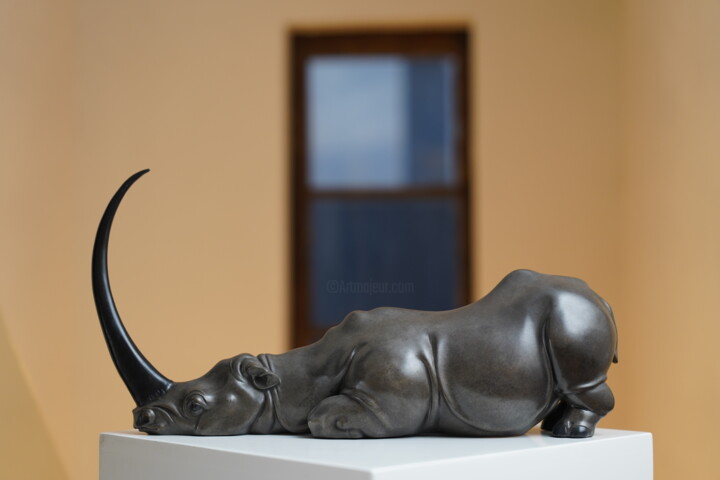
©2017 Zhao Yongchang
Origins and History
Original contemporary Oriental Art has its roots in ancient Chinese and Japanese artistic traditions, which date back millennia. These artistic traditions have been shaped by various periods of history, such as the Tang Dynasty in China and the Heian Period in Japan. The evolution of these art forms continued into the 20th century, with the emergence of Contemporary Artists who drew inspiration from their cultural heritage while incorporating modern techniques and styles.
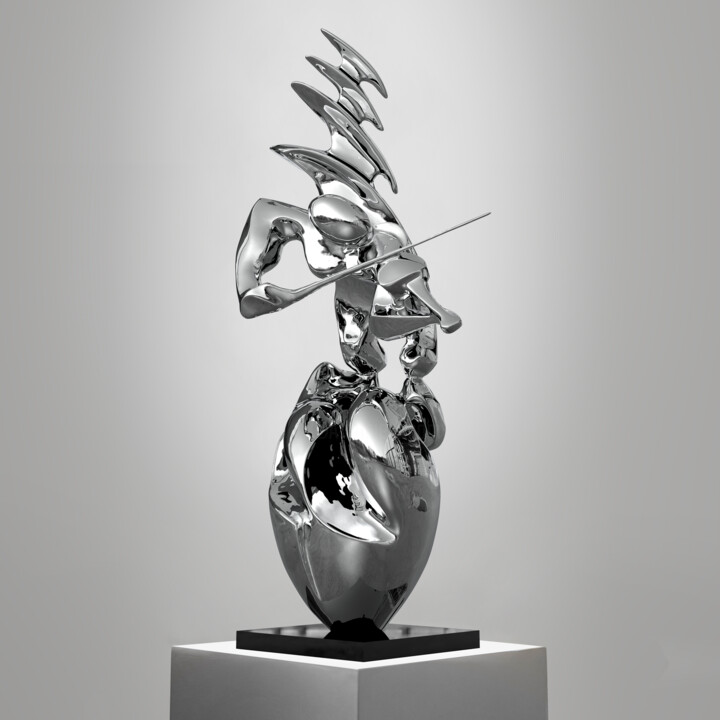
©2010 Shi Jun Liu
Evolutions of theses works in the contemporary art market
The fusion of traditional and modern techniques has created a new wave of artwork that is gaining popularity in the contemporary art market. These artworks showcase a unique blend of Eastern and Western elements, highlighting the beauty and complexity of Oriental culture. The use of vibrant colors, intricate details, and bold brushstrokes adds depth and dimension to each piece. The importance of these artworks lies in their ability to bridge the gap between cultures and bring a fresh perspective to the art world. As collectors and art enthusiasts seek to expand their collections, original contemporary Oriental Art artworks offer a unique and valuable addition.
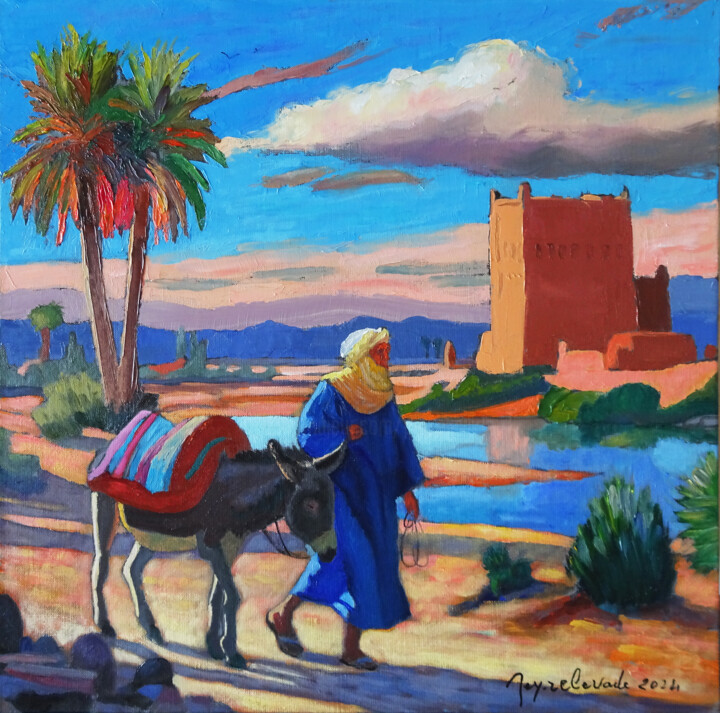
©2024 Jacques Peyrelevade
Related Famous Artists
Contemporary Oriental Art has been gaining popularity in recent years, with numerous artists creating original and innovative artworks. One of the most prominent artists in this field is Ai Weiwei, whose provocative and politically charged pieces have garnered international attention. Another notable artist is Cai Guo-Qiang, who is known for his explosive and dramatic installations featuring fireworks and gunpowder.
Yayoi Kusama is another acclaimed artist whose work often incorporates elements of traditional Japanese art and culture. Her colorful and whimsical sculptures and installations have captivated audiences around the world.
Ai Xuan is a Chinese artist whose paintings often depict the natural beauty of China, with a focus on the country’s wildlife and landscapes. His works are characterized by their vivid colors and meticulous attention to detail.
Zhang Xiaogang is another Chinese artist whose paintings explore themes of identity and memory. His haunting portraits often feature distorted or fragmented faces, reflecting the complex and multifaceted nature of human experience.
Finally, Liu Bolin is a performance artist who uses his body as a canvas, blending into his surroundings to create stunning and thought-provoking images. Known as the "Invisible Man," Liu’s works comment on issues of identity, visibility, and social justice.
Overall, these artists represent the diversity and creativity of contemporary Oriental Art, pushing the boundaries of tradition and exploring new forms of expression.
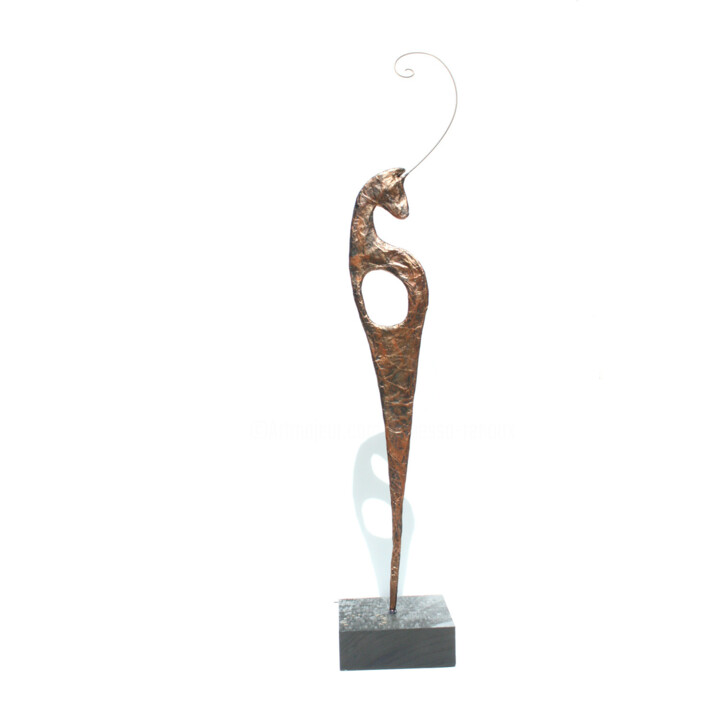
©2024 Vanessa Renoux
Notable original contemporary Oriental Art artworks
Contemporary Oriental art has produced many impressive artworks that have captured the attention of art lovers around the world. One of these is "Chrysanthemum" by Liu Dan, created in 2005. This piece is a delicate painting of a single chrysanthemum flower, showcasing the artist’s mastery of ink and brushwork.
Another notable artwork is "Spring Snow" by Zhang Xiaogang, created in 2006. This painting captures the stark contrast between the white snow and the vibrant reds and oranges of the trees in bloom. The painting is a beautiful example of the artist’s ability to capture the beauty of nature through his unique style.
One of the most famous contemporary Oriental art pieces is "Forever Lasting Love" by Xu Bing, created in 2001. This artwork is a massive installation made of thousands of cigarettes arranged to form Chinese characters. The artwork comments on the cultural significance of smoking in China and the impact it has on people’s lives.
Another impressive artwork is "Garden of Earthly Delights" by Cai Guo-Qiang, created in 2014. This installation is a massive garden filled with sculptures, paintings, and other works of art. The artwork is a reflection of the artist’s fascination with the beauty of nature and the power of art to transform our perception of the world around us.
Finally, "Peach Blossom Spring" by Yang Fudong, created in 2017, is a stunning video installation that tells the story of a group of travelers who discover a hidden paradise filled with the beauty of nature. The artwork is a powerful reflection on the importance of preserving the natural world and the beauty that can be found in unexpected places.

Vanessa Renoux
Sculpture - Metals | 21.3x3.9 in
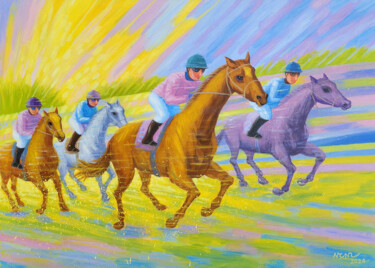
Chi Nguyen
Acrylic on Canvas | 31.5x43.3 in
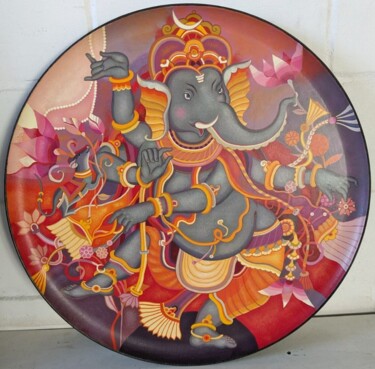
Natasha Svetelshchuk
Tempera on MDF Board | 15.8x15.8 in

Jacques Peyrelevade
Oil on Linen Canvas | 19.7x19.7 in
